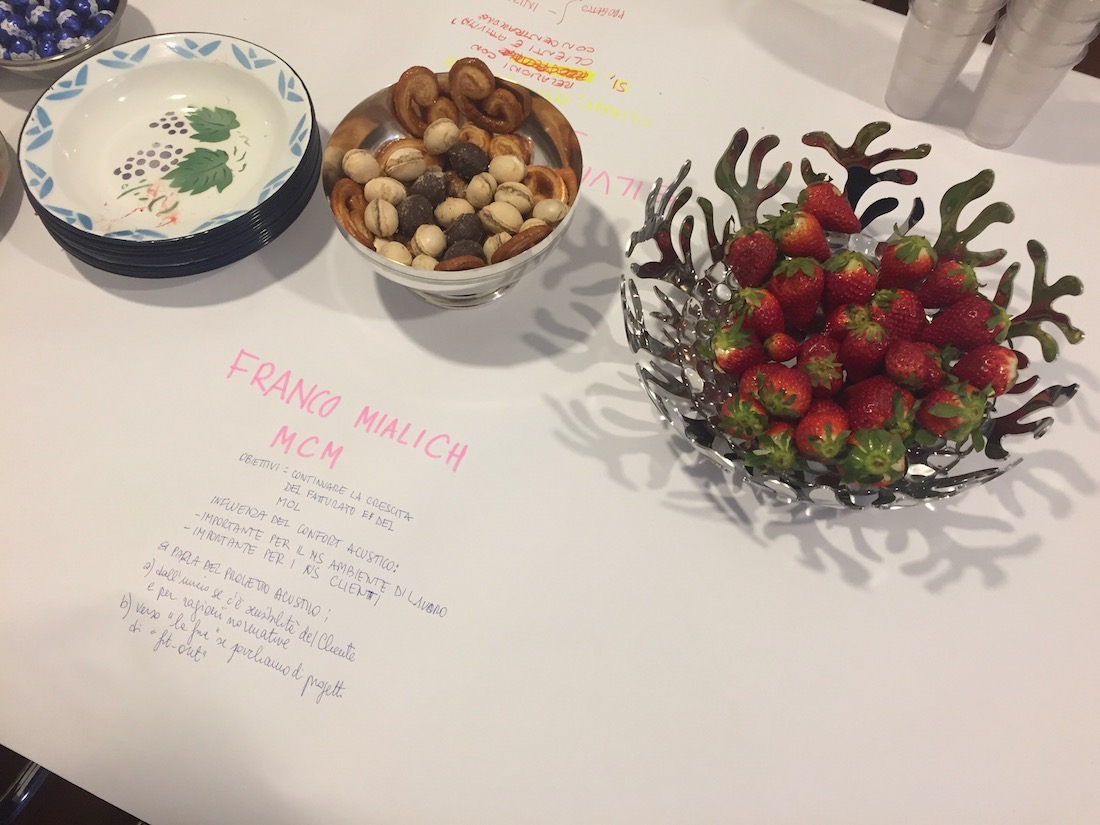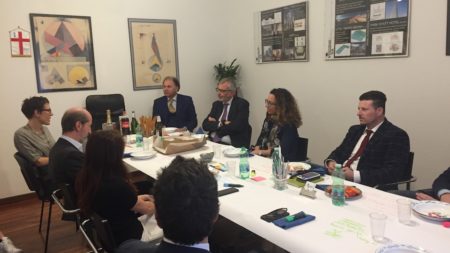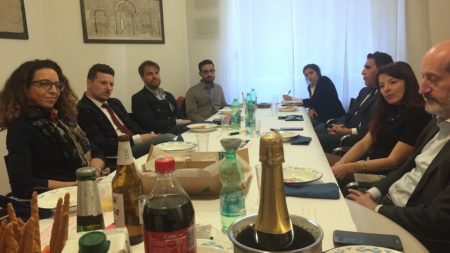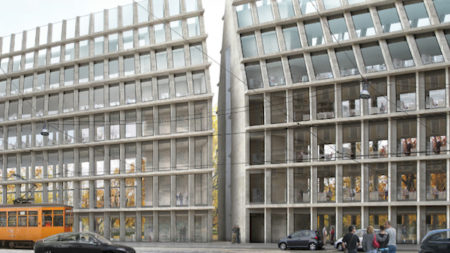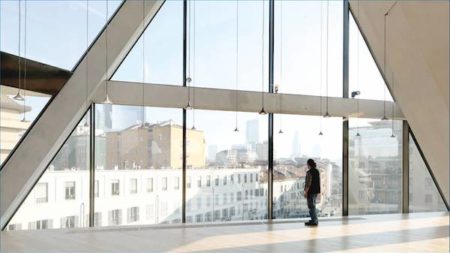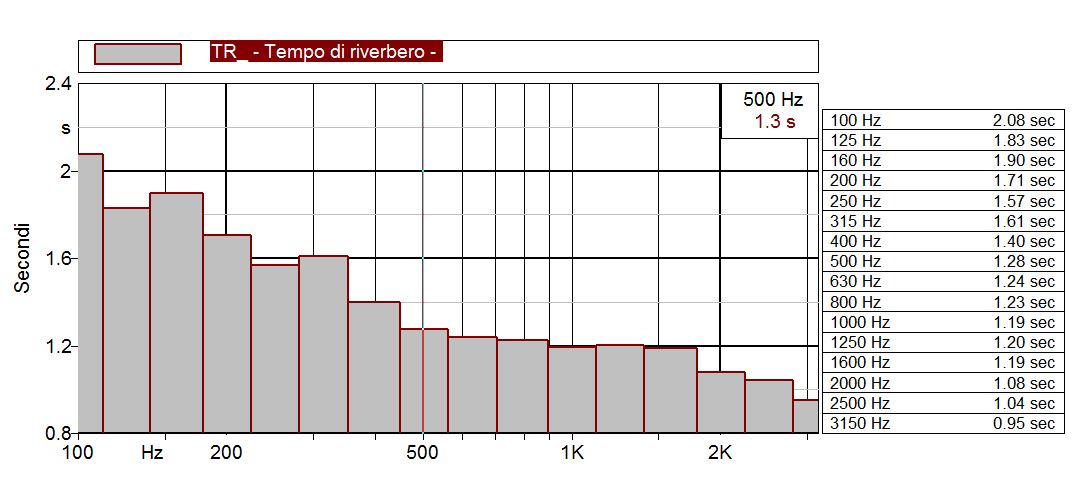
A dozen selected professionals – architects, project and facility managers – met to discuss the most frequent issues concerning the issue of acoustic comfort in the workplace and, in an absolutely convivial and informal situation, shared their experiences and skills.
This article summarize the main observations that emerged during the Learn & Lunch organized by WOW! and hosted at V.I.V.A. Consulting.
The founder Ezio Rendina, an acoustic engineer with 30 years of experience, provided interesting design ideas that will be explored in specific articles to be published soon.
We are gathered around a table for a very special light lunch: we take notes with a felt-tip pen on a “tablecloth-blackboard”, we tackle joking and amicable problems that are very complex, we openly declare our perplexities and talk about them without fear of competitor adopted solutions and best practices.
The convivial and informal atmosphere of the meeting has certainly facilitated the participation of the professionals and made “light” even a complex topic such as acoustics. Here are the main issues that emerged.
All those present agree that comfort or acoustic discomfort can have a positive or negative impact on work activities, performance and productivity. This opinion is also shared by the respective customers who have a rather high level of sensitivity towards acoustics.
So the problems related to acoustic comfort are solved?
In contradiction with the awareness of the importance of acoustic comfort, some of the architects and project managers admit they have not yet optimally resolved this aspect in their workplaces and even the facility managers are not satisfied with the acoustic conditions in the company indeed.
The open plan office generates noise and consequent annoyance, decrease in attention, difficulty in concentrating.
The data presented by ing Rendina and based on scientific evidence are worrying. A study of a large school population in the United Kingdom, which can also be transferred to open-space workers, has shown, among other things, that a 10dB increase in background noise corresponds on average to a 5-7% reduction in performance.
Despite the basic dissatisfaction, designers rarely turn to an acoustic engineer.
However, we share the opinion that the wellbeing of people – who represent the greatest cost of companies – is closely linked to business.
And it is no coincidence that the acoustics is also one of the elements taken into consideration by the WELL certification for the attribution of credits to the building.
So why is acoustics neglected in the architectural project or is it taken into consideration in the final phase, when it can only correct obvious errors?
Sometimes there is a latent fear that the acoustic engineer may limit the architect’s creativity or propose technical solutions not valid by the aesthetic point of view.
The engineer Rendina reassures those present, taking as an example the solutions he adopted in an “extreme” case: the iconic buildings of the Feltrinelli Foundation designed by Herzog & De Meuron.
To solve the acoustic problems, the presents declare to usually turn to acoustic products and solutions producers because they provide the project free of charge.
Rendina points out, however, that even when companies operate with professionalism, the ultimate goal is to sell their products.
Excess sound absorption can even cause acoustic discomfort!
It is well known to experts that “we does not only with hear our ears but also with our eyes”
This reveals another false opinion: acoustic comfort is often confused with sound absorption.
On the contrary, Rendina explains that the acoustic problem in open plan offices can be solved brilliantly by “managing” the noise instead of absorbing it.

At least, many solutions can be found, but only with the scientific preparation, competence and specialization of an acoustic professional.
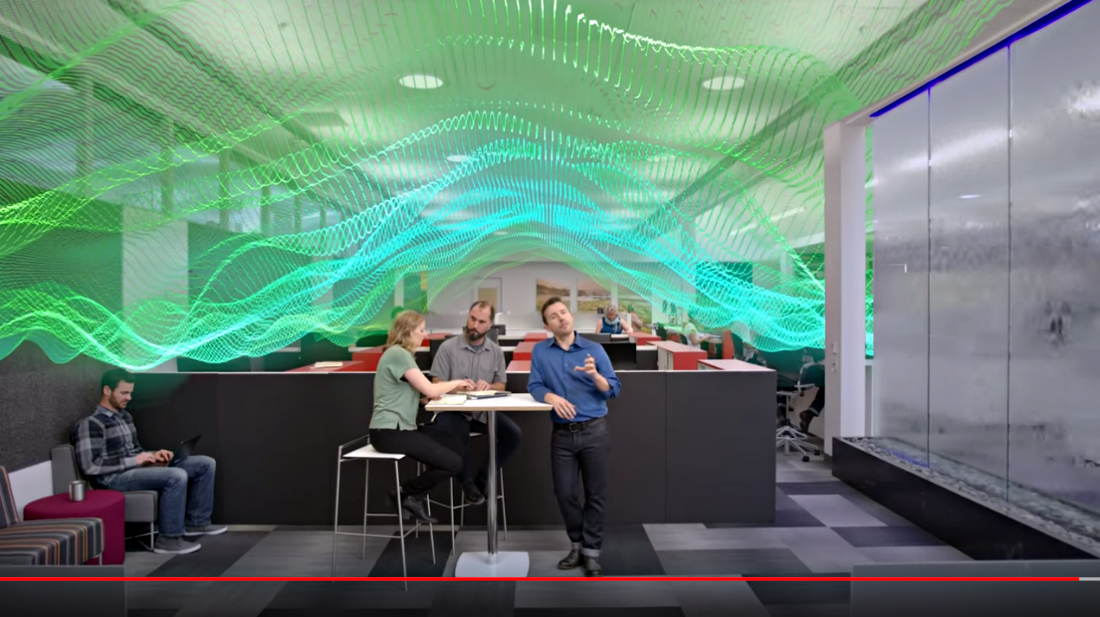
Thanks to Ezio Rendina and the professionals attending the Learn & Lunch:
Paolo Primo Stancari
Senior Project Manager ISS Facility Services
Franco Mialich
Project manager MCM
arch Gianmarco Bocchiola
Partner Coima
Massimiliano Notarbartolo (con Michela Grosso)
CEO Progetto CMR design& Build
Eleonora Prassino
Arch. Project Manager, Senior Consultant Project & Development Services Cush Wakefield
Simone Ferrara
Arch. (design& Build) DC10 Studio
Silvia Impelluso
Chartered Surveyor MRics Associate Director, Workplace Strategy, Project & Development Services Department JLL
Andrea Lionetti
Facility Manager Head of Corporate RE & Workplace Services Italy, Zurich
Elena Giugni
arch, MCA Cucinella.

